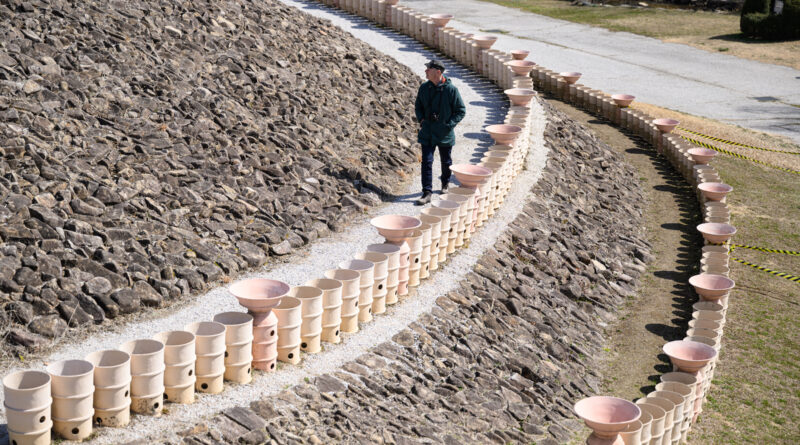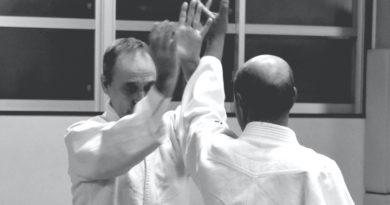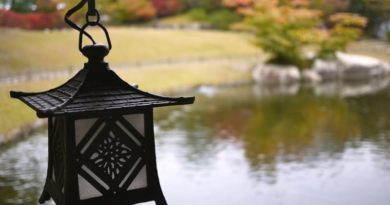Going beyond sake in Higashi-hiroshima unearths hidden gems
Although Saijo in Higashi-hiroshima City is still very much off the radar of most people from overseas, it is well known among sake aficionados as one of Japan’s top three sake producing regions. No fewer than seven sake breweries,all with long and well respected pedigrees, are clustered around its Sakagura Dori brewing district and thousands of people descend on the usually sleepy town during its 2-day sake festival in October.
Beyond sake, however, most would struggle to name another reason to visit this little town east of Hiroshima which will host this year’s G7 Summit. However, as I discovered on a recent visit, the area now known as Saijo has an illustrious history that is so long that it is difficult to comprehend. Much of this history has only been uncovered relatively recently, and even local residents are surprised to learn that their little town was once an important power center, centuries before the nearby city of Hiroshima was even conceived.
An ancient burial ground in the suburbs
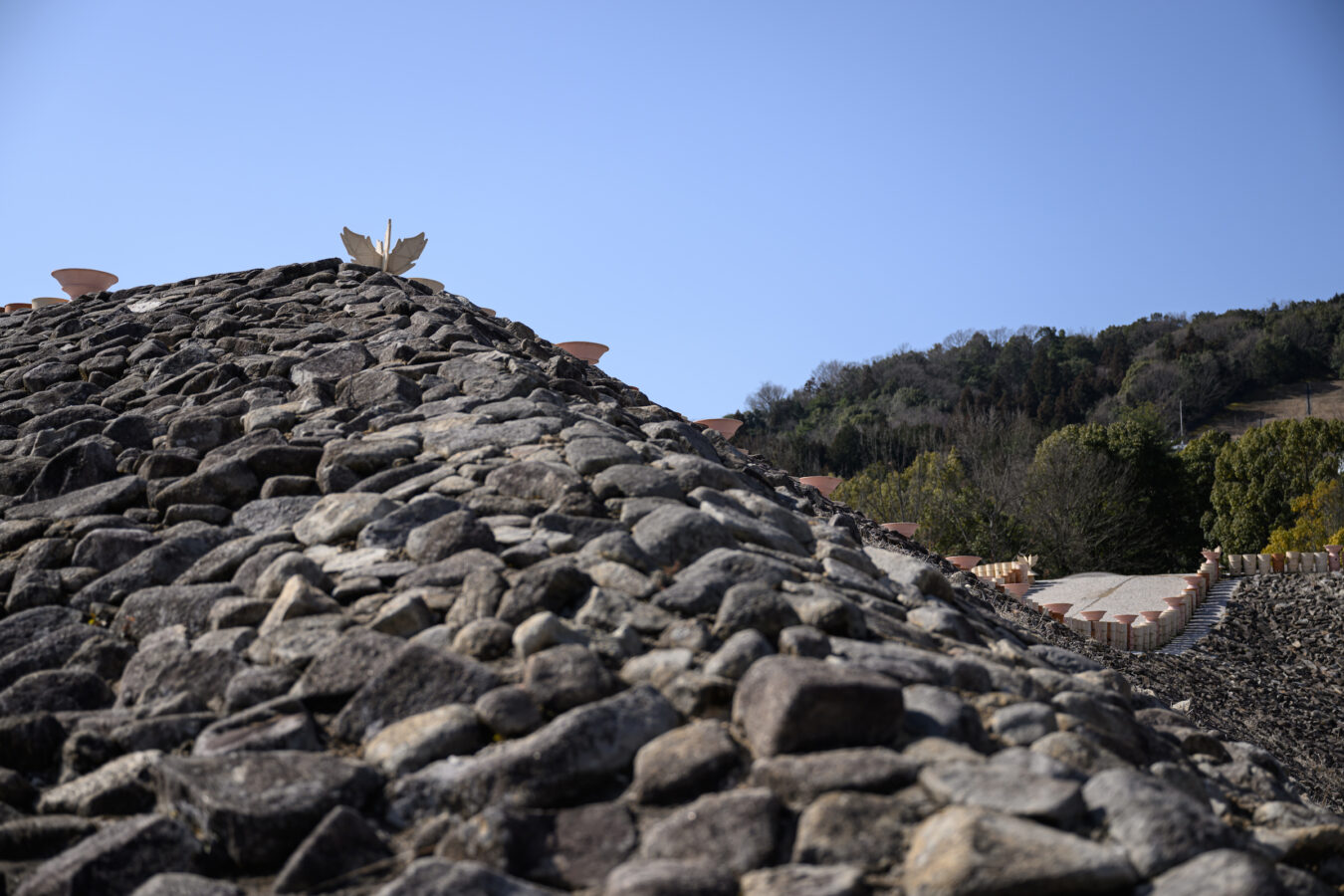
The red chimneys of Saijo’s sake brewing district fade into the distance as a taxi drives me away from the railway station. In a few minutes we are weaving our way through suburban neighborhoods and I start to wonder what on earth to expect on arrival. When the taxi deposits me at Mitsujo Park, I am quite taken aback. Before me, nestled among residential developments, is what is clearly a burial mound. And it is huge.
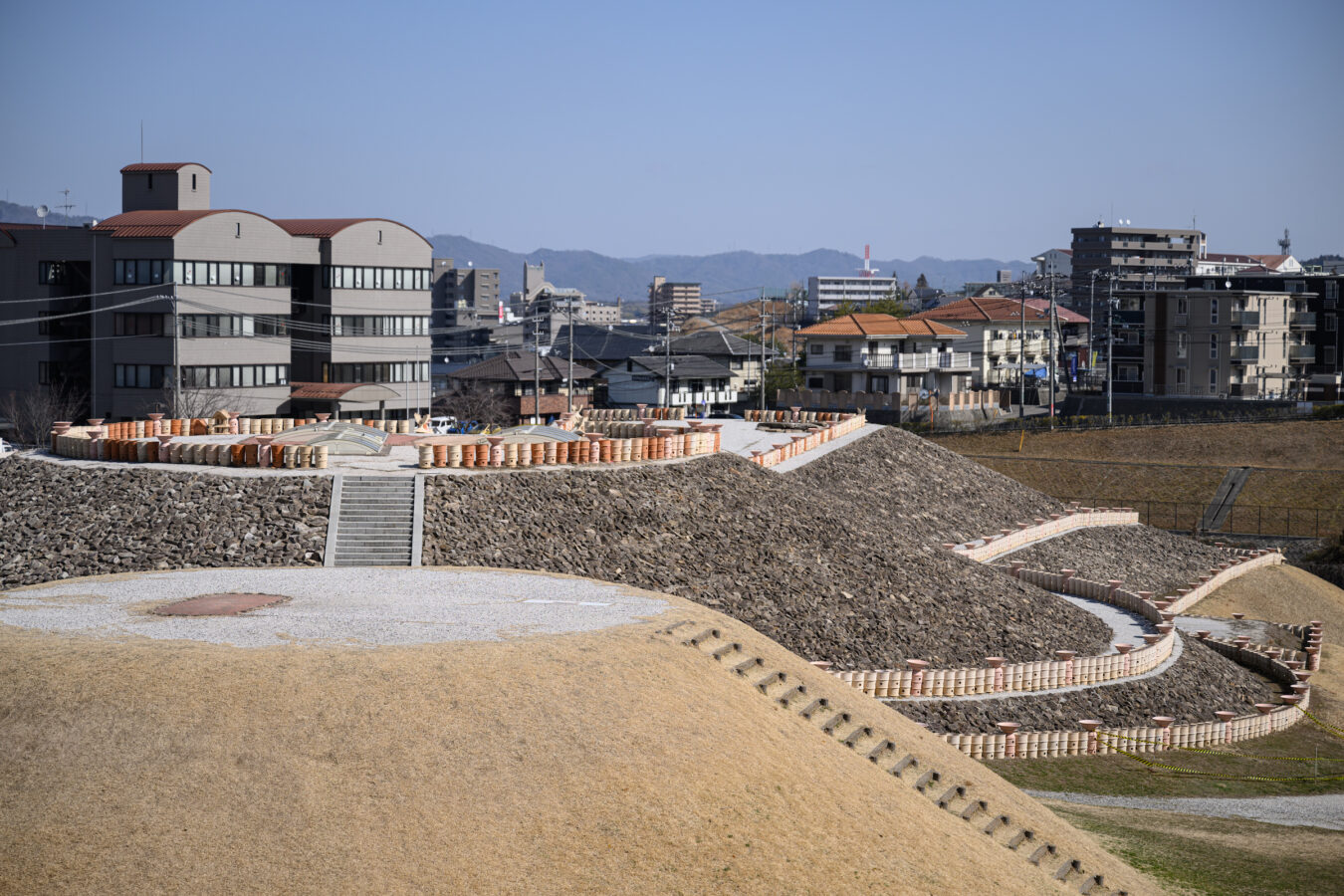
A smiling lady from the Higashi-hiroshima Volunteer Guide Association greets me and enthusiastically leaps into an explanation of the site as I try to get my bearings. The more she explains, the more I realize that this really is something quite special. The park contains three ancient burial mounds, the largest of which, a keyhole shaped mound, dating from the first half of the 5th century, is almost 100m long and stands 13m high. The scale of the mound and intricate design of the clay haniwa ornaments that decorate the mound indicate that the remains found here are those of the ruler of the region that became known first as Aki and later Hiroshima Prefecture.
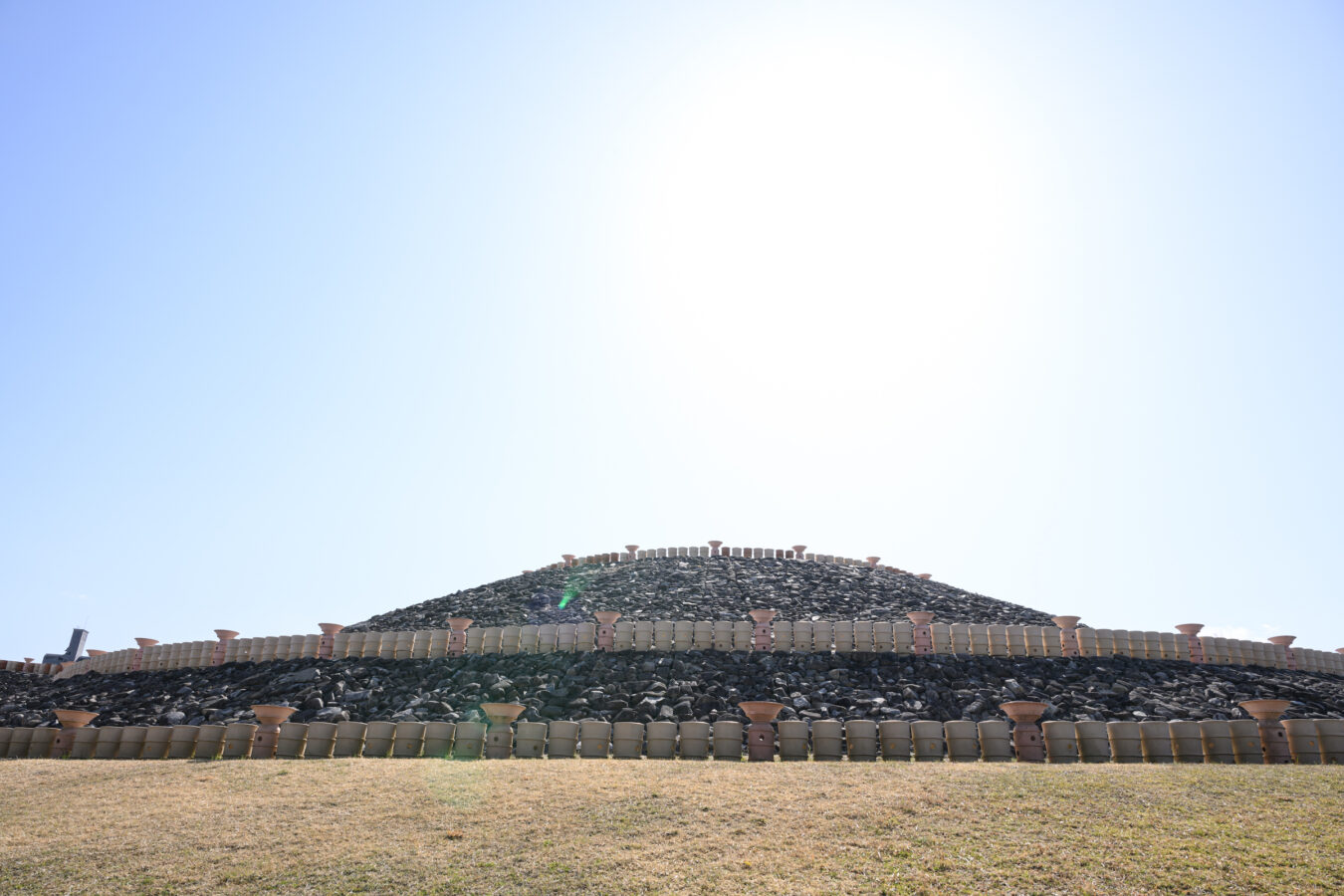
What we can see on the surface today is a reconstruction built on top of the original mound to protect what lies beneath. I was initially disappointed that, for financial reasons, the replica haniwa ornaments are mostly made of plastic, but as I followed the path that loops around the site, taking in the explanation of my guide, culminating in peering into the now empty tombs on top of the mound, I the really started to appreciate the importance of the place.
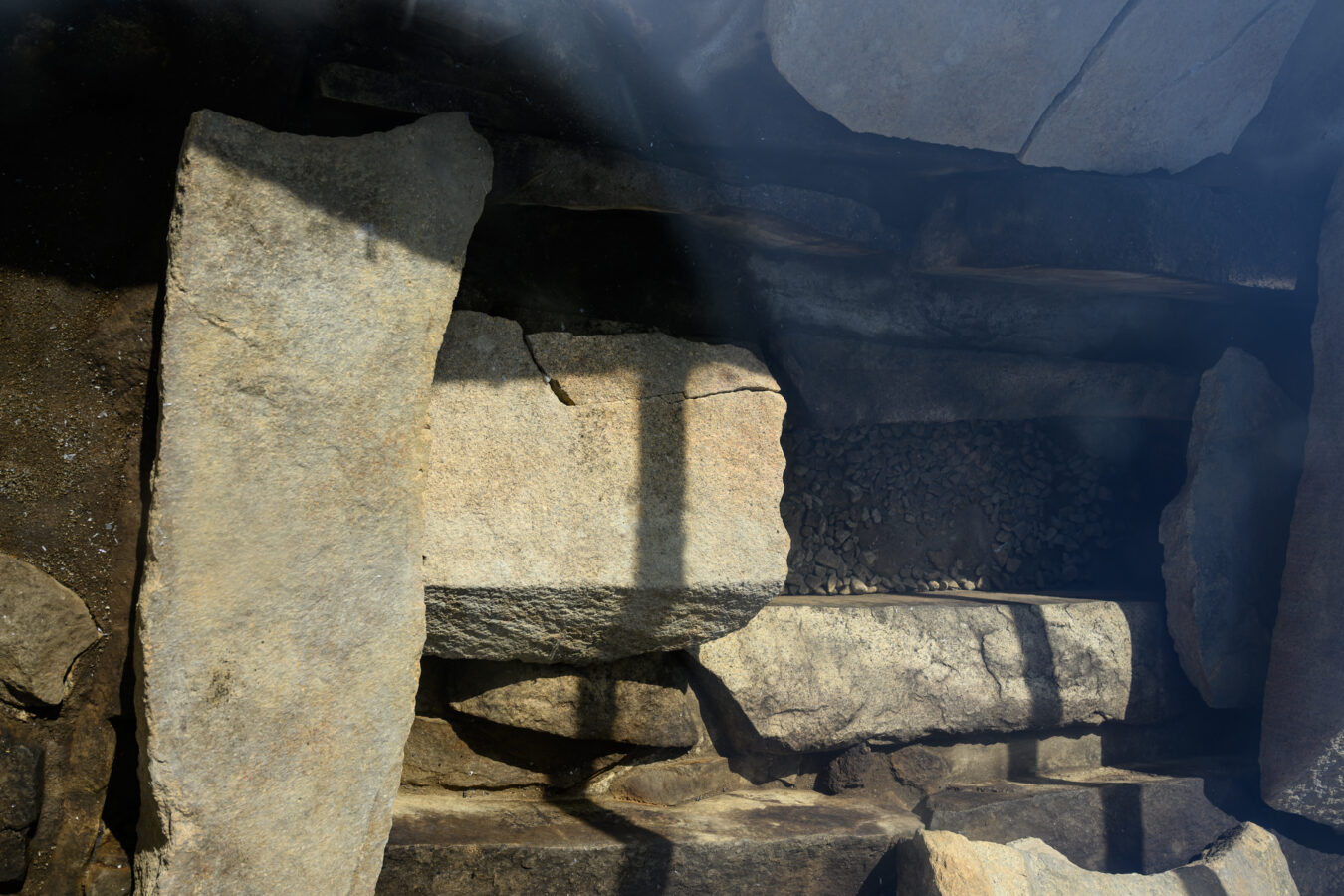
The tumulus has some English signage, but some of the explanations are definitely lost in translation, soI would highly recommend booking a guide to show you around. You can also see some items excavated from the tomb are displayed in Higashi-Hiroshima Municipal Central Library, next to the park.
Mitsujo Tumulus (Mitsujo Kofun)
7-24 Saijo-chuo, Higashi-hiroshima, Hiroshima Prefecture
https://goo.gl/maps/EoR2KXjH1AJQEwZ18
10 minutes by car from Saijo JR Station
Approx 15 minutes by bus from Saijo JR Station (Loop Bus Red Route to Mitsujyo-kofun-mae bus stop)
Admission: Free
Aki Kokubun-ji Temple: Symbol of an Emperor’s piety evidence Higashi-hiroshima’s historical importance

A 20 minute taxi ride takes us back past Saijo Station and transports us around 200 years into the future to the time of the Yamato emperors who ruled Japan from the ancient capital of Nara.
By the 8th century, Buddhism had made its way to Japan from the Korean peninsula and Emperor Shomu decreed that every province in the kingdom establish a Kokubun-ji Temple. That the Kokubun-ji Temple of the province of Aki was built here in Saijo is evidence that the area continued to be a place of significance.
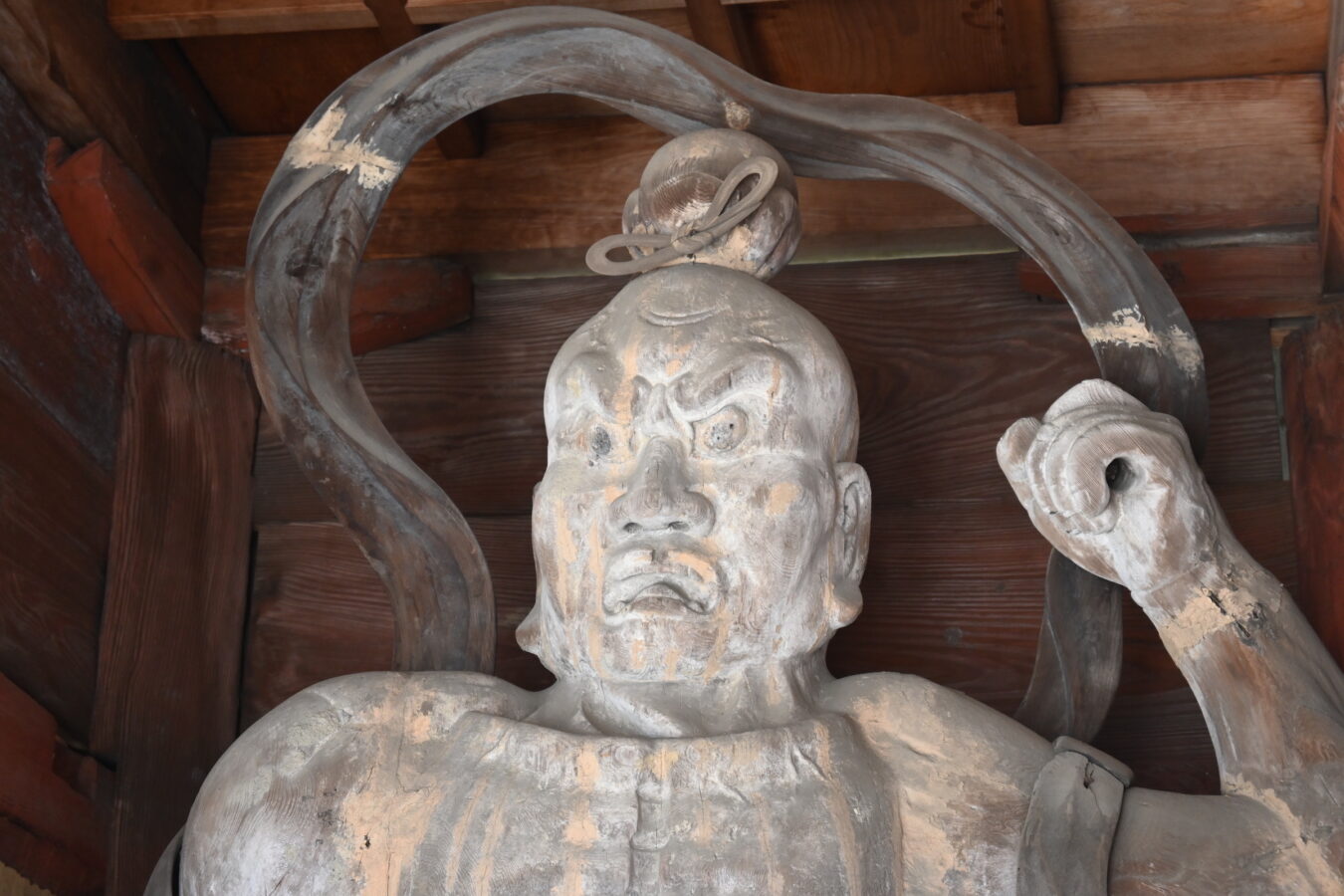
To be honest, after passing by the fierce-looking nio statues that guard the temple gate, while the temple is certainly picturesque, it is rather difficult for the uninitiated to recognize its historical significance. My local guide, however, had a wealth of information about its history and the “rediscovery” of the temple through archeology. The gate we had just passed through, took on renewed significance when she told me that while parts of it had been rebuilt over the years, a prayer card had survived almost 500 years since a pilgrim pasted it to the gate survived in 1547.
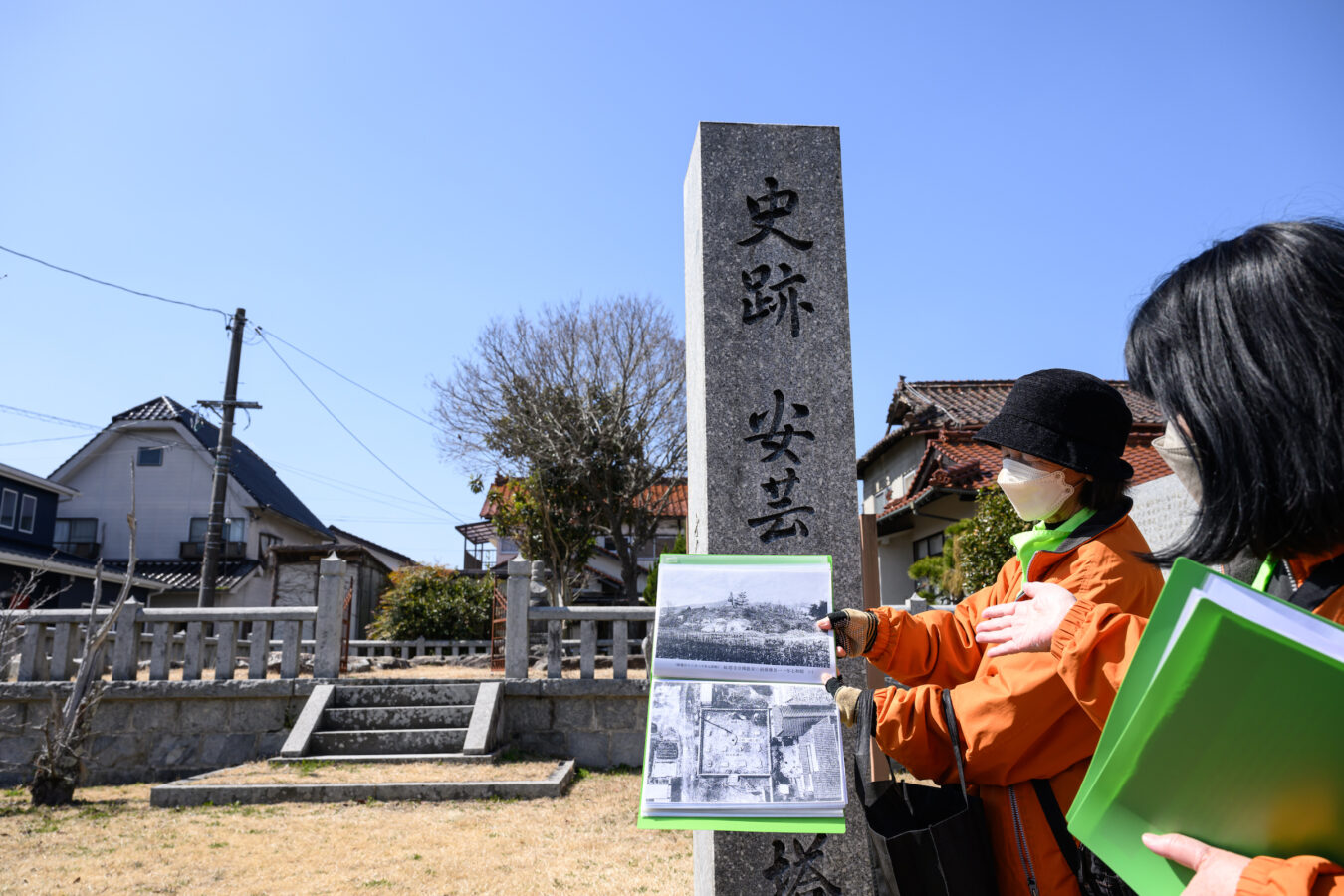
It turned out that despite the obviously long history of the temple, it wasn’t until 1932 that, on discovery of the site of the original temple’s pagoda, that archeologists confirmed that this was the site of Aki’s provincial temple. Further excavation has revealed that it was not only built at the behest of the ancient emperor, but that it was of considerable scale and significance. Thanks to my guide’s interpretation, what appeared to be a pleasant, but unremarkable, park, was transformed into the scene of an archeological drama and the former grandeur of Aki Kokubun-ji Temple became visible.
You don’t have to be an archaeology buff or a student of Japanese history to enjoy Aki Kokubun-ji. The current head priest is extremely welcoming and offers accommodation in recently renovated shukubo lodgings along with vegetarian shojin Buddhist cuisine and opportunities to try various activities. Just a short walk from Saijo JR Station and the brewery district, it is an excellent base from which to explore both Saijo’s history and its sake.
Aki Kokubun-ji Temple [安芸国分寺]
Yoshiyuki Saijo-cho, Higashi-hiroshima, Hiroshima Prefecture
https://goo.gl/maps/MQyUnJPHdBiJgDqg8
7minutes walk from Saijo JR Station
Admission: Free
URL: https://www.aki-kokubunji.com/
Behold the rocks of ages at Senseki Garden
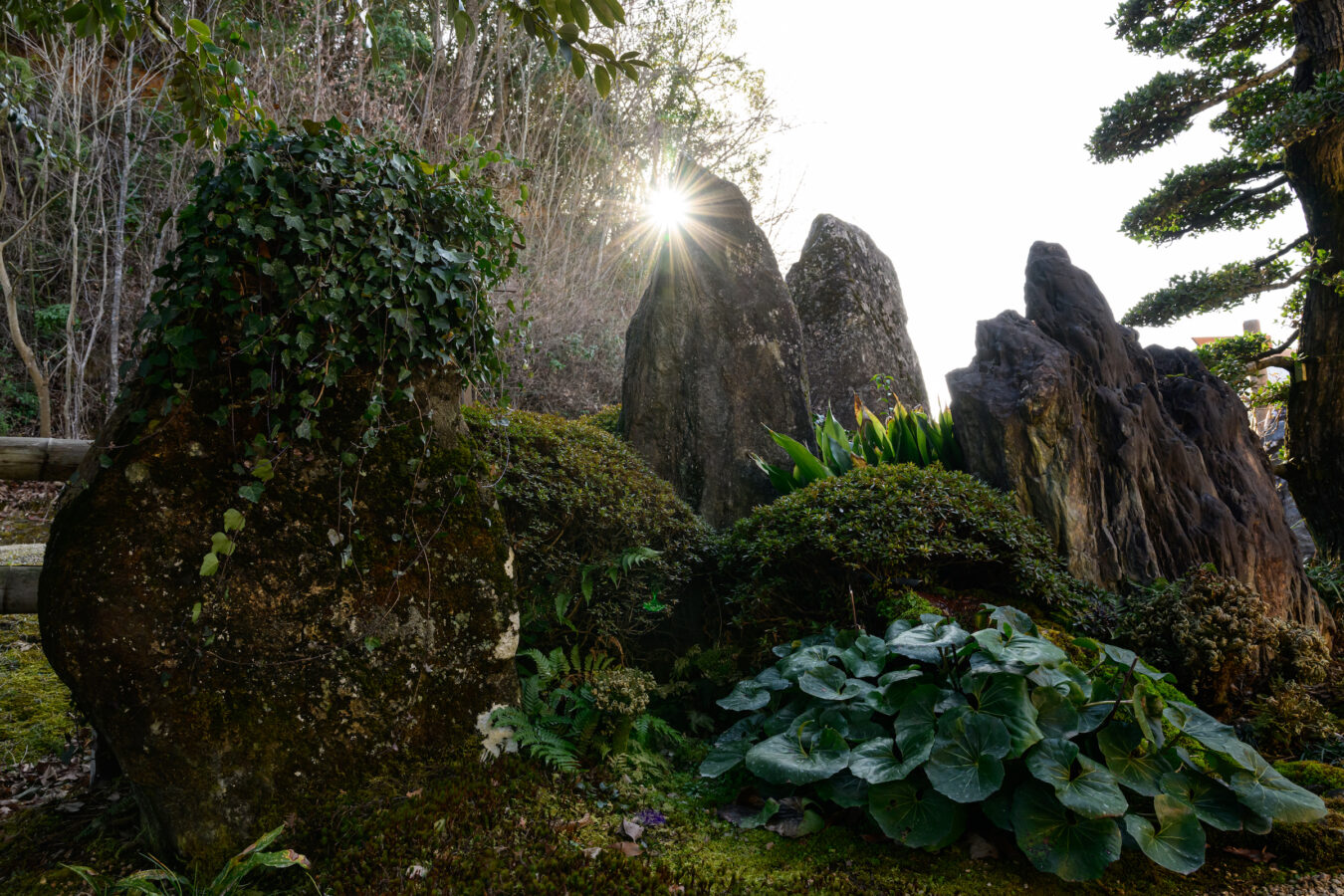
A short distance to the northeast of Saijo JR Station, is one of those unexpected surprises that the Japanese countryside delivers in abundance. Senseki Garden has only been open since 2013, but the main attractions and source of the garden’s creator inspiration are as almost as old as the earth itself. An unabashed passion project of retired doctor Seizo Yamana, Senseki Garden is a rock garden like no other. Indeed, it is like a love letter to the beauty, power and, one feels, the soul of rocks.

Yamana spent 20 years building this physical embodiment of his passion for rocks and, talking to him, you wonder if he will ever really feel like he is finished. I didn’t quite know what to make of the garden and its creator, but his enthusiasm for the huge rocks, transported here from all over Japan, that have been carefully arranged according to his design, inspired by a mix of intuition and respect for classical Japanese garden design, is infectious.
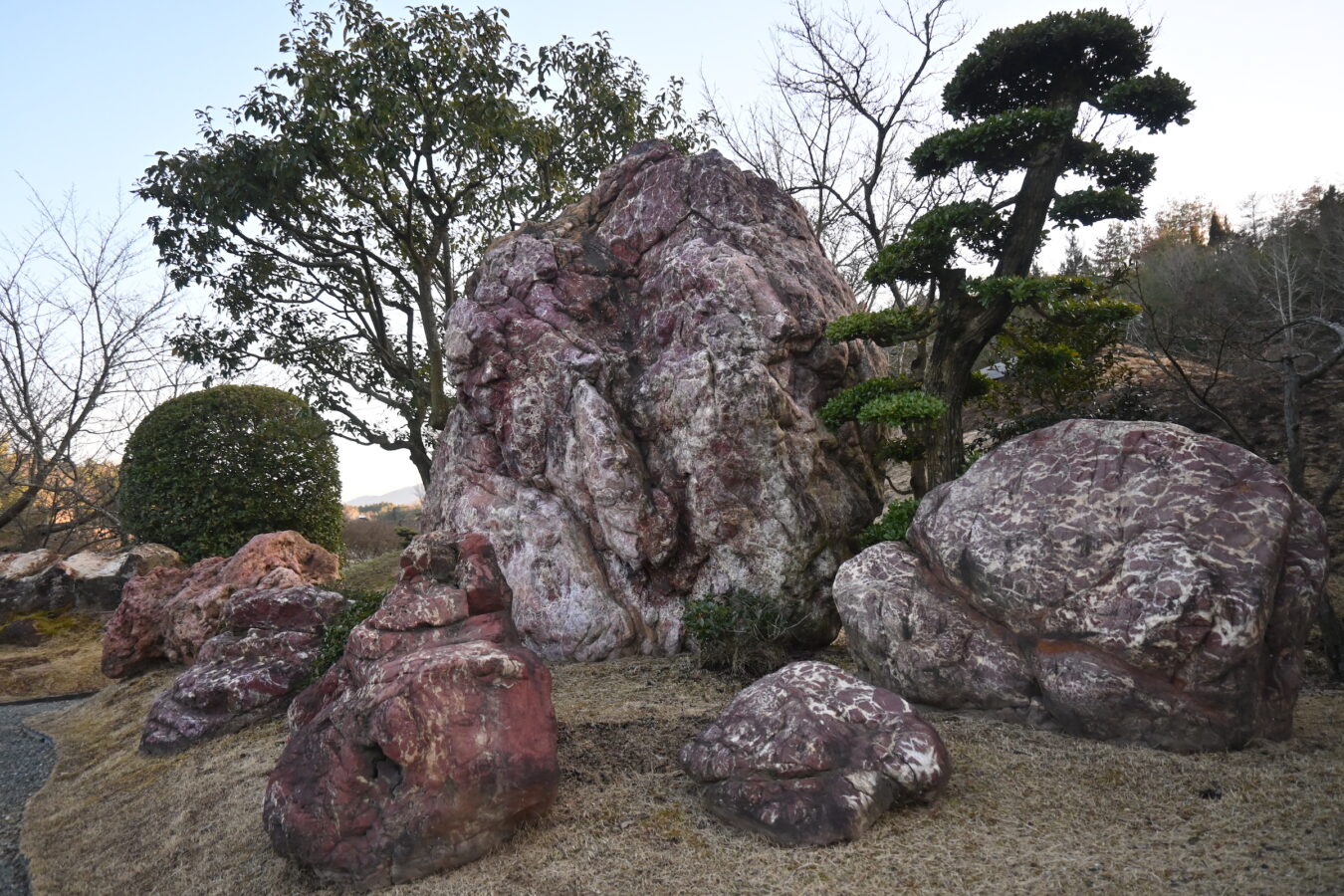
Any one of the scores of rock arrangements in the expansive garden would serve as the prime feature of any Japanese garden.
It is also a beautiful space. Winter, when I visit, is Yamana’s favorite season as the trees, bare of foliage, don’t obstruct his view of his beloved rocks.But, come spring the place bursts into color, and the hues change according to the seasons through the year.

Yamana sees his garden as his legacy and gift to the world. He sees the Japanese garden as the stage on which traditional Japanese culture is best showcased. Concerned that younger generations have little opportunity to appreciate their value, he has added BBQ grills and even a pizza oven that overlooks the garden, in the hope that they may look up from their margherita and notice the beauty before them.

Senseki was incorporated in 2022 to ensure that it can continue after Yamana is gone. Trying to keep up with him as he skips from rock to rock across a lake to activate a 15m waterfall hewn from rocks of all colors, however, it’s hard to imagine that this will be anytime soon. I hope so. The world dearly needs people like Seizo Yamana.
Senseki Garden [仙石庭園 / Senseki Tei-en]
1398 Takaya-hori, Takaya-cho, Higashi-hiroshima, Hiroshima Prefecture
https://goo.gl/maps/gyw1BCnZyPHMVBvA8
20 minutes by car from Saijo Station
8 minutes by car from Nishi Takaya JR Station
40 minutes walk from Nishi Takaya JR Station
Open: 09:00-17:00
Admission: ¥1000 (Elementary & Junior High School ¥300, Pre-school free)
URL: https://senseki.org/


